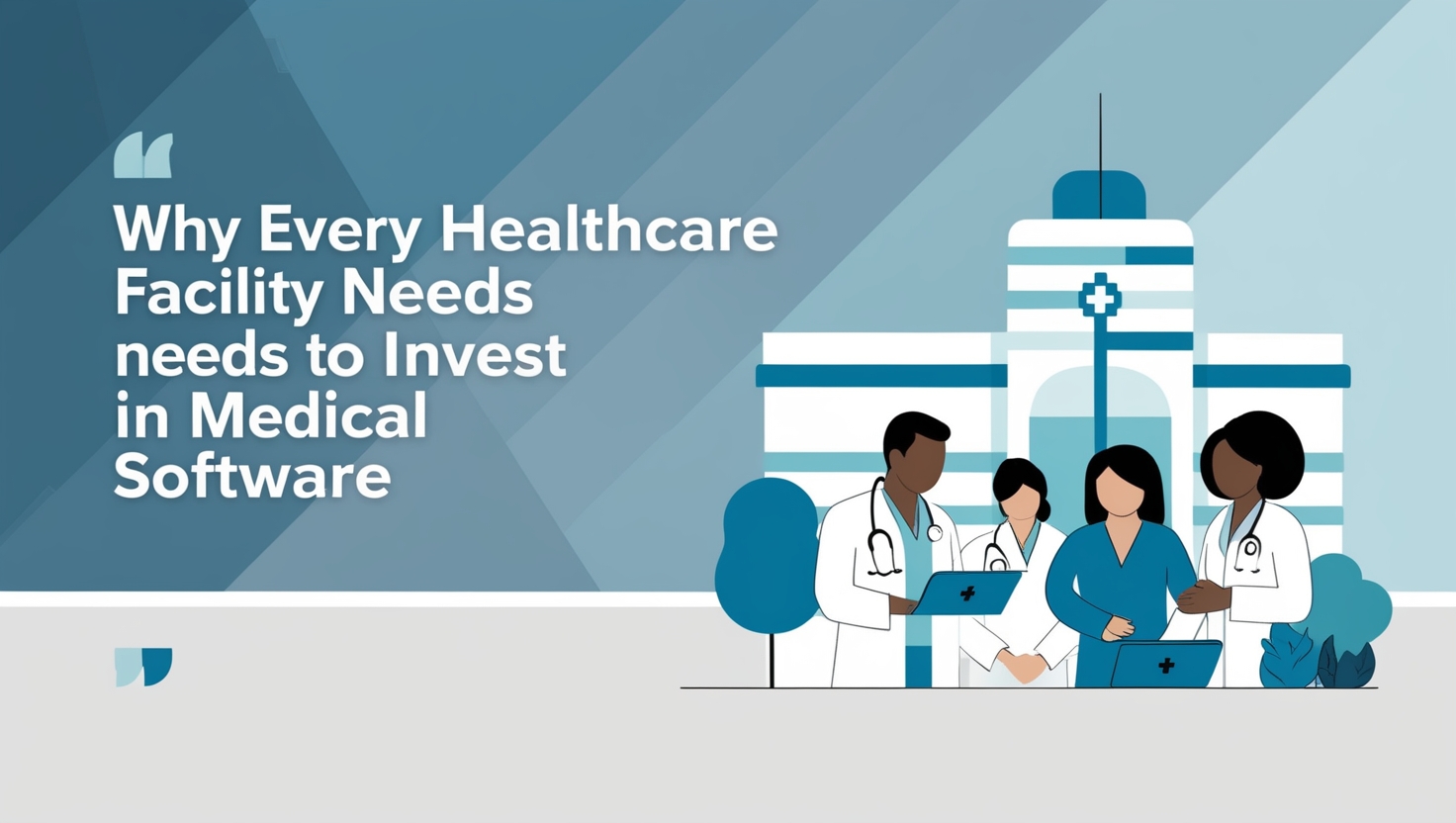Why Every Healthcare Facility Needs to Invest in Medical Software
In today’s fast-paced healthcare environment, hospitals, clinics, and other healthcare facilities face numerous challenges, from maintaining high-quality patient care to managing complex administrative tasks. One way to address these challenges effectively is through the implementation of medical software. Whether you’re operating a small clinic or managing a large hospital network, the right software tools can significantly enhance the quality of care, streamline administrative processes, and ensure compliance with regulations.
The Growing Importance of Medical Software in Healthcare
The healthcare industry is rapidly evolving, with new technologies and methodologies constantly emerging. Medical software is one of the primary enablers of these advancements. From Electronic Health Records (EHR) to telemedicine platforms, medical software solutions can support a wide array of functions within a healthcare facility.
“Medical software is no longer a luxury for healthcare providers, but a necessity to ensure efficiency, accuracy, and patient-centered care.” — Dr. James O’Connell, Chief Technology Officer at HealthTech Innovations.
Here’s why every healthcare facility should invest in medical software:
1. Improved Patient Care and Safety
One of the primary reasons healthcare facilities should adopt medical software is to enhance patient care. Medical software systems, such as EHRs (Electronic Health Records), allow healthcare professionals to access and update patient information in real time, providing accurate data at the point of care. This reduces the risk of errors, such as misdiagnosis or incorrect medication administration.
Benefits to patient care include:
- Better Diagnosis: Integrated systems help doctors make informed decisions by providing access to comprehensive patient histories, lab results, and medical imaging.
- Faster Treatment: Medical software ensures quicker communication among medical staff, allowing for faster decisions and treatments.
- Enhanced Monitoring: Advanced medical software can monitor patients’ vitals and alert healthcare providers if there are any significant changes.
“When healthcare professionals have real-time access to accurate patient information, they can provide more personalized, precise, and timely care.” — Dr. Maria Evans, Healthcare Consultant.
2. Increased Operational Efficiency
Healthcare facilities are notorious for their complex workflows and administrative burdens. From managing appointments and billing to coordinating between departments, the volume of tasks can overwhelm even the most seasoned professionals. Medical software automates many of these functions, allowing staff to focus more on patient care.
Key operational benefits include:
- Appointment Scheduling: Software can automatically schedule and manage appointments, reducing the risk of double-booking and minimizing no-shows through automated reminders.
- Billing and Claims Processing: Medical software can streamline billing and insurance claims processes, reducing errors and speeding up payment cycles.
- Inventory Management: Systems can track medical supplies and medications, helping facilities maintain optimal stock levels and avoid shortages or overstocking.
“Investing in software solutions can help reduce administrative overhead, leading to a more productive workforce and fewer operational bottlenecks.” — Mark Johnson, CEO of MedTech Solutions.
3. Compliance and Regulatory Requirements
Healthcare facilities are subject to numerous regulations, including those set by the Health Insurance Portability and Accountability Act (HIPAA), FDA, and other governing bodies. Medical software is designed to ensure compliance with these laws, which can be complex and vary by region.
How software aids in compliance:
- Data Security: Medical software incorporates encryption, secure access controls, and audit trails to safeguard patient data and prevent unauthorized access.
- Regulatory Reporting: Many software systems come with built-in tools to help facilities generate reports needed for regulatory compliance, reducing the risk of fines and penalties.
- E-prescribing: Many systems allow healthcare providers to electronically prescribe medications, reducing the chance of prescription errors and ensuring that pharmacies follow up with the necessary procedures.
“In an industry as regulated as healthcare, staying compliant isn’t optional. Medical software provides an essential layer of security and assurance for healthcare providers.” — Dr. Rebecca Shapiro, Healthcare Policy Expert.
4. Cost Savings
While the initial cost of investing in medical software may seem substantial, the long-term financial benefits far outweigh the investment. By automating administrative tasks, reducing errors, and improving operational efficiency, healthcare facilities can save both time and money.
How medical software contributes to cost savings:
- Reduced Human Error: By minimizing manual data entry and automating processes, software reduces the risk of costly errors, including incorrect billing and diagnosis.
- Staff Efficiency: Automation of repetitive tasks allows medical staff to focus on patient care, reducing the need for additional personnel.
- Fewer Operational Bottlenecks: With a streamlined workflow, medical facilities can handle more patients with fewer resources, increasing revenue potential.
5. Scalability and Flexibility
Medical software solutions are highly scalable, making it easier for healthcare facilities to grow without significant infrastructure changes. Whether you’re expanding your clinic or opening new branches of a hospital network, medical software can adapt to your evolving needs.
Scalable features include:
- Cloud-based Solutions: Many modern medical software systems are hosted on the cloud, which makes them accessible from any device with an internet connection. This flexibility allows healthcare facilities to manage operations remotely or at multiple locations.
- Customizable Modules: Healthcare providers can choose specific software modules based on their needs (e.g., appointment scheduling, telemedicine, EHR), allowing them to invest only in what they truly require.
“With healthcare facilities increasingly expanding, scalable software systems are key to ensuring seamless growth and continuity of care.” — David Miller, Director of Software Solutions at MedPro Systems.
6. Improved Communication and Collaboration
Effective communication is essential in healthcare. A robust medical software system facilitates communication across different departments, allowing clinicians, nurses, and support staff to share critical information quickly and securely.
Benefits of enhanced communication include:
- Real-Time Updates: Doctors, nurses, and other staff can communicate patient information instantly, ensuring that everyone is on the same page.
- Better Coordination: When everyone from the receptionist to the surgeon can access the same system, collaboration becomes more efficient, leading to better patient outcomes.
- Patient Portals: Many software systems include patient portals, allowing patients to access their own health information, communicate with their doctors, and schedule appointments online.
Conclusion: Investing in the Future of Healthcare
The investment in medical software is no longer optional—it is a necessity. The right software tools not only improve patient care and operational efficiency but also help healthcare facilities stay compliant with regulations, reduce costs, and scale for future growth. In a rapidly evolving industry, medical software ensures that healthcare facilities are equipped to meet the needs of both patients and providers.














Post Comment